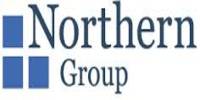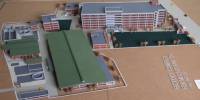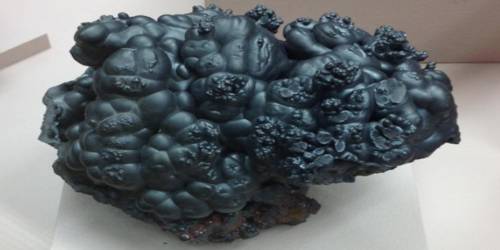Introduction
This report is prepared on the basis of the working experience at Siemex Textile Mills Ltd. Working on this organization I came to know various Kinds of Marketing practices which are use here. Though it is a textile, it has proved itself in the textile industry as a major competitor. In this report I have followed the guidelines provided by the teacher.
Now a day the practical knowledge is the essential in the competitive world. We can gather theoretical knowledge by reading books but it is not sufficient to gather practical knowledge.
Internship Report is a vital part of BBA program. It helps to link between theoretical and practical knowledge. Marketing is a social and managerial process by which individuals and organization obtain what they need and want through creating and exchanging value with others. Marketing is the process by which companies create value for customers and build strong customer relationships in order to capture value from customer in return.
Spinning marketing focuses on the yarn. Now a day spinning sector is one biggest sector of our country. A lot of foreign currency earn from this sector to our country. So it is very important to study or gather knowledge for this sector. Our economy getting benefit from this sector. Day by day spinning sector is becoming faster and wider. More and more unemployed people can joined this sector. My whole report focuses on marketing activities of 100% export oriented spinning industry in Bangladesh of Siemex Textiles Ltd.
Objective
The broad objective of this report is to provide an overview of marketing practices of Siemex Textile Mills Ltd. The specific objectives of this report are:
- To study the marketing activities of yarn marketing in Bangladesh.
- To find out the problems and prospect regarding yarn marketing of the organization.
- To determine the procedure to earn foreign currency from spinning industry.
- To learn how to formulate marketing policies.
Scope
The report covers use marketing activities of Siemex Textile Limited. It focuses use marketing mix elements of Siemex Textiles Limited. Readies also know use recommendation given for Siemex Textiles Limited.
Methodology
To prepare this report I have collected data from different published materials. Then I have conducted a secondary study. I also collect data from internet. Thus we have used both primary and secondary report to prepare this report.
Sources of Data
To prepare the report I have collected data from both primary and secondary sources.
Primary Sources
Primary data were collected from
- Discussion with officers of Siemex Textile Mills Ltd.
- Observation of practical work of the responsible officer
- Discussion with my supervisor.
- Conversation with buyers.
- Group discussion.
Secondary sources
The secondary data are collected from
- Relevant documents which are provided by the officers concerned.
- Annual report of Siemex Textile Mills Ltd.
- Prospectus, Publication, Brochures, Magazines and Newspapers and also internal records
Limitations
I have done my study on ‘Marketing Activities of Siemex Textile Mills in Bangladesh’ and getting time. In such a short period of time, I had to collect huge information about my topic whatever is given to me, which is difficult to expose everything for preparing this report. I am preparing this paper practical observation. Due to shortage of time I am not able to prepare a very good report and also did not get much time.
The main limitation in preparing this report was the communication gap between different personnel because of workload. All the information was not given to me because some of the information is confidential. That’s why office secretary has concealed some information to me.
Time Schedule of the Study
| SI.NO | Particulars | Duration |
| 01 | Data Collection | 30 days |
| 02 | Data Analysis | 20 days |
| 03 | Report Writing | 20 days |
| 04 | Revise | 10 days |
| 05 | Finalize | 10 days |
| Total | 90 days |
Philip Kotler (2001): Marketing must be understood not in the old sense of making a sale-“telling and selling”- but in the new sense of satisfying customer needs; develops products that provide superior value; and price, distributes, and promotes them effectively, these products will sell very easily. Thus, selling and advertising are only part of a larger “marketing mix – a set of marketing tools that work together to satisfy customer needs and build customer relationships. Marketing is a social and managerial process by which individuals and groups obtain what they need and want through creating and exchanging value with others.
J. Willam Stantion (1998): The most basic concept underlying marketing is that of human needs. Human needs are states of felt deprivation. Wants are the form human needs take as they are shaped by culture and individual personality. When backed by buying power, wants become demand. Product quality is one of the marketers major positioning tools. Quality has a direct impact on product or service performance; thus, it is closely linked to customer value and satisfaction. In the narrowest sense, quality can be definition. The first step is to set advertising objectives. These objectives should be based on past decisions about the target market, positioning, and marketing mix, which define the job that advertising must do in the total marketing program. Advertising strategy consists of two major elements: creating advertising messages and selecting advertising media. Sales promotion consists of short-term incentives to encourage purchase or sales of a product or service.
Jabbar, S.K. (2006) says, “Readymade Garment sector in Bangladesh: A Study from the employers perspective”, in ILO. In contrast to the public scoter –led import substituting industrialization strategy pursued during the first few years after independence, the industrialization philosophy of the government changed rather dramatically from the late 1970s when the emphasis was on import-oriented growth to spearhead by the private sector. Towards this end, various policy reforms were implemented in the 1990s.Some of these policies contributed considerably to the growth of the RMG industry in Bangladesh
Quddus & Rashid (2000) says, The RMG export industry in Bangladesh commenced during 1977-80 for quota free status to U.S.A. This quota free status was the single largest factor for rapid development of this industry in Bangladesh augmented with the advantages of abundant cheap and skilled labor force. Bangladesh continued to procure fabrics and yarn from textiles surplus countries abroad until 1990. Thereafter, a few companies in Bangladesh have started setting up textile industries to fabric and yarn for export-oriented RMG industry. However, Bangladesh does not produce cotton; therefore they need to import the material while India and China have domestic cotton for their textiles. So, Bangladesh textiles are 10 to 15 % higher priced than those imported price from India or China creating a cost disadvantage for Bangladesh RMG corporate.
American society (2000): Quality defines quality as the characteristic of a product or service that bear on its. Quality in terms of creating customer value and satisfaction.
Pride and Ferrell (2010): “Marketing consists of individual and organization activities that facilitate and expedite satisfying exchange relationships in a dynamic environment through the creation, distribution, promotion, and pricing of goods, services and ideas’’.
Mark Gwilliam (1999): Marketing is “A management activity that identifies, anticipates and satisfies customer requirements, efficiently and profitably”.
American Marketing Association (1995): “Marketing is the performance of business activities that direct the flow of goods and services from producer to consumers or users’’.
Mark Gwilliam (1999): I come across so many business owners who simply confuse marketing with sales and focus solely on “selling”. Yes, I know that the end result is to make a sale but there’s more to selling your product or service than making a sale.
P. Margan and Mare Jegers: “Trade Credit, Product Quality and Intra-group Trade Sonic European Evidence;” Financial Management: The collection policy is the method of dealing with past due account. The first step is to analyze the average collection period and to prepare an again schedule that relates the age of account receivable, they represent the next step is to decide on the collection method and to evaluate the possibility of factoring that is selling the overdue account.
About Company
Siemex Textiles Limited. Started its journey by establishing the first unit in 2000. One year later the second unit was established Siemex Textiles is a subsidiary company of Siemex Group . The operation was started in 2000. Within a very short time of span the company achieved some significance success. Siemex Textile receives Oeko-Tex standard 100 and ISO-9002 certificates in the year 2002. Authorized capital of the company is tk. 1000 million. It’s paid- up capital is tk. 251.90 million. 885 employees are working in this organization. The business lines of Siemex Textiles Limited are manufacturing and marketing of yarn. The factory is located in Vill: Lakhupura, Post.Araihazar,Thana. Araihzar. Narayongonj,Dhaka, Bangladesh. Its office is located Celebration Point, House # 39, Flat # D-3(3Rd Floor) Road # 20, New D.O.H.S Mohakhali, Dhaka-1206, Bangladesh.
Mission Statement
The mission statement of Siemex Textiles Limited is “Our mission is realization of vision through maximum production of goods and services strictly on ethical and moral standards at minimum costs to the society ensuring optimum benefits to the shareholders and other stakeholders.” This mission is envisioned by the concept of business which ensures well being of the investors, stakeholders, employees and members of the society which will create new wealth in the form of goods and services.
Executive Management
The Managing Director, the CEO is the head of the Executive Management Team which comprises senior members of the Management Apparatus. Within the limits of delegated authority and responsibility by the Board of Directors, Executive Management operates through further delegation of authority at every echelon of the line management. The executive Management operates within the framework of Policy & Planning strategies set by the Top Management with periodic performance reporting for guidance. The Executive Management is |responsible for preparation of segment plans / sub – segment plans for every profit centers with Igetary targets for every items of goods & services and are held accountable for deficiencies, appreciation for outstanding and exceptional performances. These operations are itinuougly carried out by the Executive Management through series of Committees, sub -litters, Committees & standing Committees assisting the line management.
Standing Committee
Standing Committee comprises the following committee:
. Audit Committee
- Internal Audit Committee
- ISO Audit Committee
- Social / Environment Committee
- Performance Evaluators Audit Committee
Employment Relations Committee
- Remuneration Committee
- Work Environment Committee
- Performance Evaluation Audit Committee
Management Committee
- Product Planning & Development Committee
- Quality Control & Research Committee
- Production & Inventory Management Committee
- Export Promotion Committee
Function of Manager
- Quality control manager
- Quality control officer
- Gutting Astt. Manager
- Packing Astt. Manager
- Ware house Astt. Manager
- Production officer
- Sewing technician
- 8.Sewing Supervisor
Size & Growth of Market: The Company’s marketing operations continued its emphasis on export sales over the years as depicted below:
| Year – 2011 | Year – 2010 | Year – 2009 | |
| (a) Quality sold (Kg) | |||
| • Local sales | 99,800 (0.7%) | 527,903 (3.7%) | 539,417 (3.9%) |
| • Export Sales | 14,554,342 (99.3%) | 13,817,314 (96.3%) | 13,129,599 (96.1%) |
| • Total Sales | 14,654,142 (100%) | 14,345,217 (100%) | 13,669,016 (100%) |
| (b) Sales Revenue ( Taka ) | |||
| • Local Sales | 9,455,588 (0.4%) | 32,576,936 (1.8%) | 46,956,494 (2.3%) |
| • Export Sales | 2,093,214,675 (99.6%) | 1,756,441,450 (98.2%) | 2,029,968,545 (97.7%) |
| • Total Sales | 2,102,670,263 (100%) | 1,789,018,386 (100%) | 2,076,925,039 (100%) |
Source: Annual Report 2011
The above figures show that the export sales increased by 19% in 2008over the previous year with greater exposure to international market scenario and risk.
Competitor Analysis
Only in few years back textile sector in Bangladesh was left behind but current scenarios is different. In recent years a mentionable figure of money has been invested in this industry. Government is also encouraging this sector. Government is making some favorable policies and minimizing the regulations, so that this sector can be grown up. Among the domestic companies Siemex is one of the leading one. The other potential competitors are Padma Textiles, Shamim Textile etc. Competition will be severe after 2005, that is, during the 3ost multitier agreement period. World market will be Quota free at that time. So Bangladesh mills have to compete with countries like Srilanka, China, Pakistan, Vietnam etc.
Operational Plan
The Company’s installed capacity during the year 2006 remained at the same level of the previous year at 59,472 spindles 768 Rotor heads with production capacity (at average 30s/10s counts) as follows:
| 2011 | 2010 | 2009 | |
| (1) Spindles/Rotors: | |||
| (a)Installation: | |||
| No. of Spindles installed | 59,472 | 59,472 | 59,472 |
| No. of Rotor installed | 768 | 768 | 768 |
| (b)Operation | |||
| No. of Spindles operated | 59,472 | 59,472 | 59,472 |
| No. of Rotor head operated | 768 | 768 | 768 |
| (2) Production Capacity Installed: | |||
| At Equivalent 30s Count | 11,005,000 | 10,796,424 | 10,796,424 |
| At Equivalent 10s Count | 2,204,392 | 2,204,392 | 2,204,392 |
| Total | 13,209,392 | 13,000,816 | 13,000,816 |
| (3) Operating Efficiently (%) | |||
| 30s output | 99.26 | 99.02 | 97.49 |
Source: Annual Report 2011
The above statistics depict a picture of continuous growth in production and production efficiency which has been achieved by the production – addicted management at the factory level as well as the top. The total production increased year-on-year basis at the rates of 0.43% and 1.67% during the years 2005 and 2004 respectively. The Company’s operations are carried out on an aggregate basis and are managed as a single operating segment. Accordingly the Company operates in one segment of developing manufacturing and marketing of cotton / mixed yarn for human as well as industrial use. Besides, to increase efficiency the company uses the following methods. A complete designing section for computer aided designing equipped with GERBER & INVESTRONICA systems for marker making 06 different work stations with digitizing board and full width pattern plotter.
•Computer Aided Spreading (CAS)
Computer Aided Spreading (CAS) 03 nos. Cloth spreader from GERBER & IMA, 4*30 meter long air floating table.
• Computer Aided Manufacturing (CAM) 03 nos. sophisticated LASER guided cutting machine from GERBER &INVESTRONICA Systems. The Company has future plan to expand its operation plan in yarn twisting doubling.
Potential Customer
The target market for products produced in Siemex Textiles Ltd. and Siemex Spinning Ltd. is Export Oriented Readymade Garments Industry. Readymade garments exporter that is knit fabrics, sweater and denim manufacturer. In Bangladesh Beximco Kitting, Grameen Knitwear, Shasha Denim, Knit Concern etc are the customers. Target market for products produced in Siemex Fashion Ltd. is Europe and U.S.A. Siemex Textiles does not direct sales in overseas market but sometimes India, Pakistan & other countries take their yarn.
Key Product / Services
As stated earlier the business line of the company is manufacturing and marketing of yarn. It manufactures:
- 100% Cotton Ring Span Yarn For Hosiery
- 100% Cotton OE Rotor Yarn for Hosiery
- Knit Fabrics for 100% export oriented readymade Garments Industry.
It also performs the following services:- - Dying & Post Mercerization.
- Fabric Dying
In Siemex Textile Limited two types of products are produced in two different units. These are as follows:
Unit 1: Combed and Carded Yarn from a count range of Ne.10toNe.80.
Unit 2: Combed Ring Yarn from a count range of Ne.20toNe.40. In Siemex Spinning Ltd. 100% Cotton Carded and Combed Yarn in the count range of Ne.16 to Ne.30 are produces. Finally in Siemex Fashion’s Ltd. Readymade Knit Apparels like T-Shirts, Polo shirts, Tank tops, Pajarnas, Sport wear, Under garments, Men’s & Ladies fashion wear, Kids wear are produce.
Work Place Environment
Work Environment is a legally required benefit is included in the compulsory disability laws of many countries. Mostly, employer is seen liable regardless of the fault.
- Objectives of Workers’ compensation:
- Provide income & medical benefits
- Reduce litigation
- Eliminate legal fees & time
- Encourage employer safety
- Promote accident study & avoidance
- Workers’ compensation claims
- Injury
- Occupational
-Death - Workers’ compensation benefits
- Medical services
- Disability income
- Death
Quality Control
- Objects of quality control
- Selection of Raw Materials
- Process Control
- Process Development
- Product Testing
- Specification Test
Scope of Quality Control, Quality Assurance And Testing
- Testing Lab
- Machine Auditing System
- A good Training System
- Excellent analytical backup
- Technical Expertise.
Quality Assurance
We’ve achieve WRAP Certified, BSCI Standard Audit (Status-Good).This has resulted in better performance for all operators and all supervisory staffs.
Incentive Pay Categories
Individual Group
Company-wide
Individual incentive plans
Monthly sales (How much sales was generated)
Work safety record (How many hazard or errors are being reduced.
Work attendance (If the absent is reduced or attendance is good)
Group Incentive
Performance Measures Group incentive plans
- Customer satisfaction
- Labor cost savings
- Materials cost savings
- Reduction in accidents
- Services cost savings
Company-Wide Performance Measures Company-wide incentive plans
- Company profits
- Cost containment/prevention
- Market share
- Sales revenue
Individual Incentive Plans (Piecework plans)
– Awards based on individual
Production vs. company standards
– Awards based on individual
Performance standards using objective & subjective criteria
– Quantity and / or quality goals
Advantages and disadvantages of Individual Incentive Plan
- Advantages
- Helps relate pay to performance.
- Promotes equitable distribution of compensation
- Helps retain best performers
Promotes equitable distribution of compensation
- Helps retain best performers
- Compatible with individualistic cultures and societies
- Compatible with individualistic cultures and societies
Disadvantages
- May promote inflexibility
- Unrealistic standards may hamper employee motivation
- Setting performance standards is time consuming
- Factors beyond employee’s control may affect outcomes
- Factors not rewarded may be overlooked
Group Incentive Plans
- Rewards employees for their
- collective performance
- Group incentive use has increased in industry
- 2 types
- Team – based or small group
- Gain sharing
Company-Wide Incentive Plans
- Rewards employees when company
- Meets performance standards
- 2 Types
- Profit sharing plans
- -Employee stock option plans
Competitive Strategies
- Lowest – cost
- Lower output costs per employee
- Individual & group incentive plans
- Behavioral encouragement plans
- Differentiation
- Unique product or services
- Creative, risk – taking employees
- Long – term focus
Compliance & H R D
The company is very much aware of and maintaining the buyer’s as such:
- Adequate working area.
- Well ventilated and well lighted.
- Provision of hygienic toilets facilities.
- Adequate supply of filtered drinking water.
- Adequate fire equipments are provided in all working area.
- Adequate safety exits are provided.
We maintain the local labor laws, rules and regulations for payment of wages. To keep pace with ever-changing global market demand and make the best use of updated technologies we regularly arrange training on upgrading skill.
Recommendations
The major recommendations of the study are as follows:
- Decision making power should be decentralized effectively and promptly. Filling and Records keeping system of the STML should be modernized. Operating system should be computerized.
- Marketing actives of STML should adopt current procedures of other textiles.
- Current data oriented active should analyzed by the Siemex Textile Mills Ltd.
- Siemex Textile Mills Ltd should set up modern scientific tools to collect the marketing activities related information in time and proper way.
- Information Technology Department should well equipped and high expertise in Siemex Textile Mills Ltd.
- Maximum marketers should provide proper training for perform proper marketing activities.
- Marketing team of STML should provide adequate knowledge about analysis, planning, implementation and control.
Conclusion
Siemex Textile Mills Limited is a leading player in textile sector. All Departments striving for further development. The Merchandising Department and production Department is well organized and well furnished. It has all sorts of modern facilities. The employee is highly qualified and competent. All the employees in STML are equally treated; there is internal equity as well as external equity The Employees at STML are given incentives and rewards so that motivation and encouragement is expressed. The skills of Employees are developed though proper training & development phases. This becomes a major factor in the career growth of a fashion design we understand that most of the employee may technically sound enough. But the main lacking is that they are weak in ‘‘Management Skills’’.
















